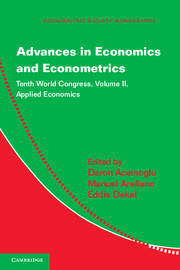11 - Trade and Labor-Market Outcomes
Published online by Cambridge University Press: 05 May 2013
Summary
Introduction
For understanding the causes and consequences of international trade, recent research increasingly focuses on individual firms. Although this research emphasizes reallocations of resources across heterogeneous firms, it typically assumes frictionless labor markets in which all workers are fully employed for a common wage. In reality, labor markets feature both unemployment and wage inequality, and labor-market institutions are thought to have a prominent role in propagating the impact of external shocks. In this chapter, we draw on recent research in Helpman and Itskhoki (2010) and Helpman, Itskhoki, and Redding (2010) to discuss interdependence across countries.
This framework incorporates a number of features of product and labor markets. Firms are heterogeneous in productivity, which generates differences in revenue across firms. There are search and matching frictions in the labor market, which generate equilibrium unemployment and give rise to multilateral bargaining between the firms and their workers. Although workers are ex-ante homogeneous, they draw a match-specific ability when matched with a firm, which is not directly observed by either the firm or the worker. Firms, however, can invest resources in screening their workers to obtain information about ability. Larger, more-productive firms screen workers more intensively to exclude those with low ability. As a result, they have workforces of higher average ability and they pay higher wages. These differences in firm characteristics are systematically related to export participation. Exporters are larger and more productive than nonexporters; they screen workers more intensively; and they pay higher wages in comparison to firms with similar productivity that do not export.
- Type
- Chapter
- Information
- Advances in Economics and EconometricsTenth World Congress, pp. 459 - 502Publisher: Cambridge University PressPrint publication year: 2013
- 13
- Cited by

